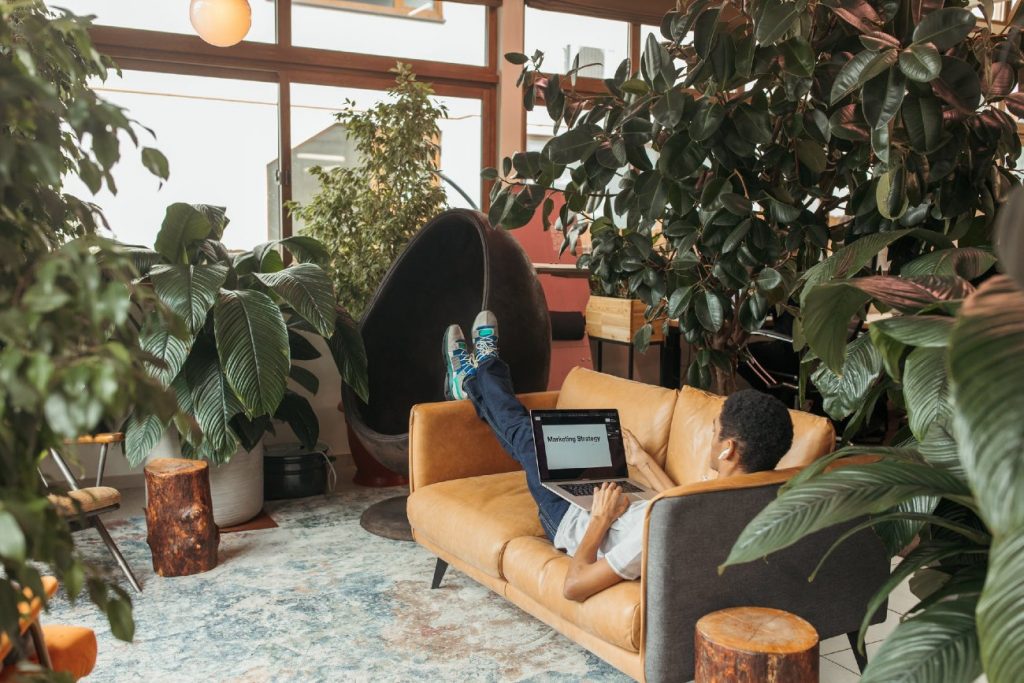
In the last two decades, the modern office has gone through several evolutions. From cubicle farms to open floorplans, office spaces are now starting to resemble a modern-day pinball alley for grown-ups.
It is often suggested that the open floor plan’s introduction has fostered a loss of concentration, focus, and even motivation in the workplace.
The truth is that knowledge work, the type of work needed for businesses to be on the cutting edge, is composed of four work modes: focus, collaboration, learning, and socialising. The move away from individual space and the pursuit to be the most innovative and collaborative may have come at a cost to productivity and concentration.
Gensler, who has completed extensive research to formulate the Workplace Performance Tool (WPI), found that the most significant workplace effectiveness factor is the individual’s ability to focus at work.
The four work modes are interconnected, but focus is the primary component and the critical predictor of all other work modes effectiveness. The Gensler research also discovered that the workplace environment is the least effective in facilitating focus for the individual.
While office trends ebb and flow, one thing remains constant – the impact of the employee’s office environment. Quality workspace design undoubtedly leads to a less stressful and more productive atmosphere, enhancing concentration and focus. For this reason alone, employers and organisations must take the physical work environment of their employees into consideration.
Focusing is difficult
Most employees find socialising and collaborating don’t take a tremendous amount of effort. But concentration is more challenging even when you are alone.
To engage in productive thought is tough! We need an undivided mind.
With increased distractions that come naturally with an open-plan office environment – co-worker interruptions, technological, auditory, and visual distractions – these all combine to make focus work the most compromised mode.
The work mode of focus is mostly space-dependent, and in the traditional office, there is limited space for this activity, not like collaboration – where you can do almost anywhere. The options for collaborative space are diverse, and the most crucial factor with collaboration is the participants. Focus needs a specified place, and historically, organisations are consistently poor at providing workplace environments to support it.
This doesn’t mean we should take a step back in time and return to the cubicle farms and rabbit warrens of private offices.
There needs to be a consideration of quality design to support the delicate balance of focus and collaboration required for workers to thrive. People need places to engage in periods of uninterrupted focus work and participate in informal, formal and virtual collaboration seamlessly. Socializing should be encouraged through various spaces, which leads to learning in all its forms – so the individual and organisation can grow and expand.

Social space to take breaks
How do we facilitate focus without compromising the other modes of work?
Concentration requires an individualised set of efficient and scalable options so that organisations can manage this from an operational and cost perspective.
Firstly, a crucial feature is to allow staff to modify their personal workspaces, within reason, according to their own needs.
Encourage employees to have only what they need around them. Provide areas where they can keep their documents and any other contents that are not required within immediate reach. This will clear away any distractions.
Have ergonomically crafted work areas with the ability to alternate from sitting to standing positions. Doing so will lessen muscle fatigue and breaks in concentration.
Support staff to utilise focus and blocking apps to facilitate distraction-free time to do their thinking work.
Attempt to have areas designated in the organisation that provides primary workspaces. These areas can then be supported by places to collaborate, socialise, and learn.
The workplace should provide clutter-free spaces. Clutter is a distraction that hinders productivity. A calm, minimalist design with clean lines and functionality is always a great strategy to inspire.
Maximise natural lighting and control glare to decrease eyestrain and headaches – both deterrents to focused thinking time.
Our bodies are designed to move. If we sit all day and try to focus, we lose productivity. Have spaces for physical activity and encourage it’s used to enhance focused work time.
The noise level in a workspace can fluctuate greatly depending on the team’s size, office designs, and company culture. But noise affects an individual’s ability to stay on task. Create quiet zones in the building. Also, ensure permission and acceptance to turn off technology to have clear and unfettered focus time.
Keep a well-balanced temperature within the office space. This helps people from being distracted from cold or feeling stifled from the heat.
If you expect your employees to have intense periods of focus, the organisation should also provide room to take breaks and recharge. Social space, outdoor areas, and rooms bathed in sunlight can give a much-needed energy boost to return to the focused work.
Collaboration, focus, socialising, and learning modes all need to be supported to have a successful organisation. But focus is essential for all of the other modes to function for the benefit of the organisation.
As organisations, we can help people better navigate their distractions through a well-designed space, ample options, leadership, and freedom to choose what works for them.
No matter if you are in charge of the office equipment or you are about to start working from home. The following article is a must read for every company, employee or freelancer: Ergonomic Recommendations For Remote Work



